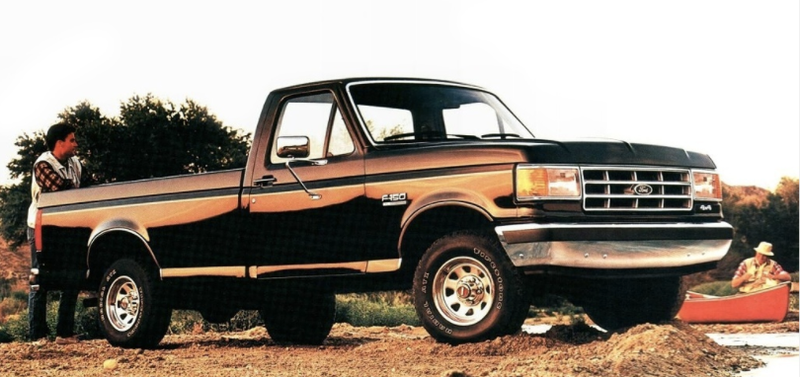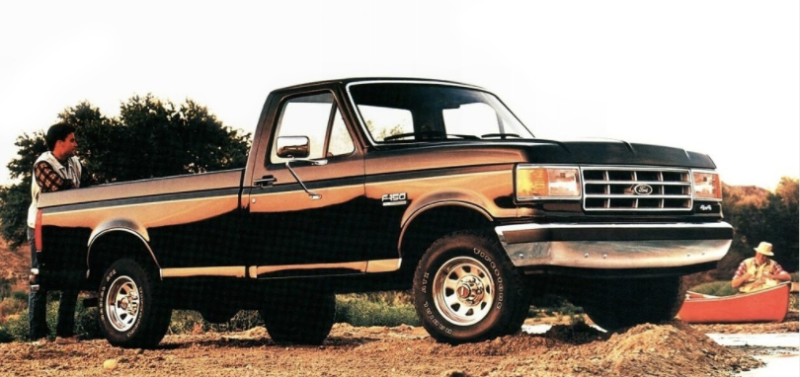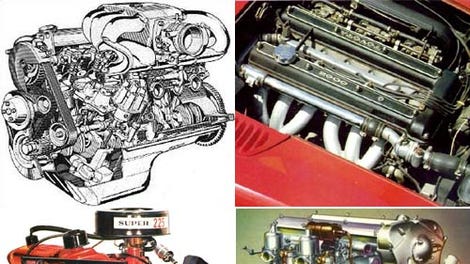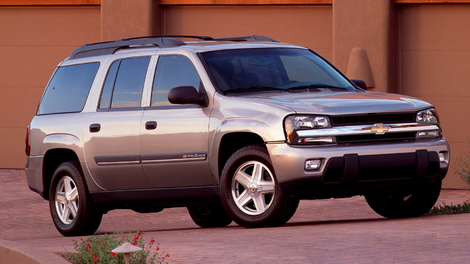
The Ford 300 cubic inch straight-six is a staple of American truck culture, having literally helped build this nation as we know it. Found in Ford F-Series trucks in the 1960s all the way until 1996, the big 560-pound iron-block powerhouse served valiantly for farmers, construction workers, and even lumberjacks. It almost cannot be killed, and that’s why you should know about it.
In today’s installment of the new series “Engines You Should Know,” I will once again try brainwashing you all into falling in love with an inline six. Except unlike the wonderfully tunable 2JZ-GTE in the Supra, or the modern all-aluminum 4200 Vortec Atlas engine from General Motors, today’s engine was built to withstand unthinkable abuse.
Advertisement
Throughout its 31 years in service, the 300 inline-six has found its way into not only farm pickups, but also airline tugs, tractors, irrigation pumps, snow plows, wood chippers and even those big brown awkward UPS trucks that delivered you your car parts. The 300 CID even got its energy from various fuel types, including gasoline, LPG, and natural gas.
The motor became a ubiquitous workhorse since it made its nod in 1965, alongside its sister-engine, the relatively short-lived 240 CID, which was just a de-stroked version of the 300. Both motors shared the same iron block, and were built in Ford’s Cleveland Engine plant, and both saw use in all sorts of agricultural applications. (The 240 found its way in cars as well, whereas the 300 was strictly a truck motor.)
Advertisement
Sponsored
While the 240 CID bowed out in the mid ’70s, the 300 CID remained for another 22 years, and continued building what will become a long-lasting legacy.
Why It’s Such A Great Work-Truck Engine
The 300 CID never made a lot of power, even after it and the rest of the Ford truck line of engines switched from a carburetors to fuel injection for the 1987 model year. Early 300 CIDs only made about 100 horsepower, while the last few model years saw figures up to about 150 HP.
Stump-pulling torque, though, is what gave these engines such legendary packmule status. With their four-inch bores and 3.98-inch strokes, early models made 223 lb-ft of grunt, and by the ’90s, that figure was over 260.
More important than their outright power was the fact that these 300 inline-sixes made so much of their torque at the bottom of the rev range. Peak twist coming in at a staggeringly low 2,000 RPM, according to F150hub. Add that to the insane 6.32:1 granny gear in the available T18 manual transmission or the 6.69:1 granny in the NP 435 trans, and 300CID-equipped trucks could tow a Sequoia up a mountain—both the Toyota and the tree.
But silky-smooth inline-six’s low-end grunt isn’t the only thing that won the 300 CID its reputation among truck lovers. What really makes the 300 stand out from the rest is its proven longevity.
The 300 CID is a bone-simple engine, made entirely of cast iron, with a beefy crankshaft held on by seven main bearings and a camshaft in the block activating pushrods to open and close the two overhead valves per cylinder.
Instead of a timing chain, the 300 CID uses fiber and phenolic timing gears.(Commercial applications use metal gears.) You tend not to see timing gears in ordinary cars, due to noise and difficulties in packaging, but they tend to be significantly longer-lasting than timing belts, and even a bit stouter than timing chains.
Advertisement
Advertisement
Most engines of that era used timing chains, which had a tendency to stretch over time. More modern vehicles, especially from Japan, use timing belts, which are even more prone to stretching. Once a belt or chain stretches, it can skip a tooth on the camshaft or crankshaft sprocket, throwing the engine’s timing out of wack. This isn’t a problem with timing gears, though after heavy use and on rare occasions, the fiber teeth can break and the phenolic resin can detach from its center hub. (Ask me how I know.)
The Carter YF carburetor was a bone-simple single-barrel design that is said to have delivered decent fuel economy, and could be rebuilt with a bubble gum wrapper and some belly button lint.
As for mods, you don’t often see the low-compression (8.8:1) 300 inline-six with lots of big bolt-ons, but sometimes folks hunting for more speed (like those on the forum FordSix) will throw on rocker arms from a Chevy, a more aggressive camshaft, a cross-flow head (in which intake and exhaust ports are on opposite sides of the cylinder), a new exhaust and even a forged crankshaft (some 300s actually came stock with forged cranks). There’s an occasional crazy person who will throw a big turbo on one of these, but these engines aren’t known for power, they’re known for that low-end twist. These engines had plenty of from the factory.
Advertisement
The Ford 300 has its issues, like exhaust manifold bolts backing out and resulting in exhaust leaks, distributor roll pins backing out, and rear main seals leaking. But these inline-sixes that have had their oil changed at least once in a blue moon tend to be freakishly durable, with many F-100s, F-150s and Broncos reaching well over 300,000 miles without an engine rebuild.
It’s not hard to argue that this humble truck powerplant is among the most reliable gas engines of all time.
















